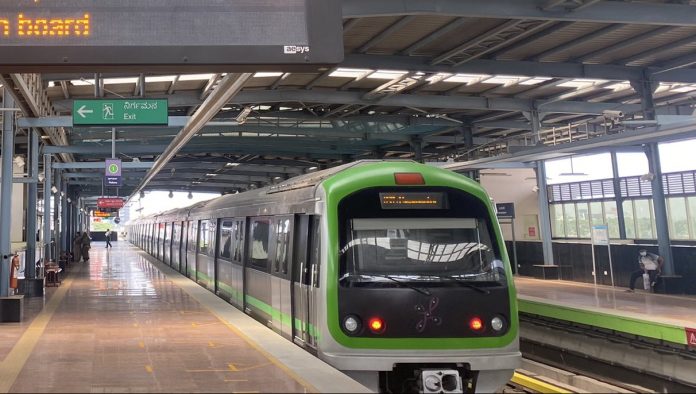BENGALURU (Metro Rail News): BMRCL managing director Anjum Parwez believes that the escalators at Namma Metro stations in Bengaluru metropolis can be regulated to move at speeds in sync with practice timings.
Talking on the third version of ‘Future ICT for Sustainable Cities Forum’ on Thursday, 17th March 2022, Parwez said “Many issues could be completed with the assistance of Info and communications expertise (ICT). Not too long ago, an knowledgeable gave us a presentation on how we will management the velocity of escalators at Metro stations.”
“As an illustration, we will enhance the velocity of escalators when a practice is approaching so extra individuals will be capable of catch that practice. And when the Metro passes, we will cut back the velocity of the escalator so that individuals can transfer leisurely. This may be such a easy concept and is feasible with the mixing of information from totally different factors. This may very well be efficient for crowd management on the stations” he added.
“We are able to have an infrastructure which is speaking to the system and likewise offering info to individuals. We are able to share information with those that are able to improvements,” he said during his speech.
BMRCL is currently planning to introduce a Communication Based Train Control (CBTC) signaling system, which is referred to as ‘driverless expertise’. Until now Namma Metro is using DTG (distance to go) signaling system, during which the time hole between two trains is two-and-a-half minutes. However, CBTC can cut back train headways to lower than 90 seconds.
“As extra individuals are touring by Metro, we will run trains at a headway of 90 seconds. We’re additionally shifting to driver-free expertise though I’m not in favour of the thought as a result of it cuts down on employment alternatives. There’s a main debate on what’s the optimum extent of modernization however the facility goes to be there,” Parwez said.
“There’s at all times a battle in each motion which you do within the identify of improvement. So it’s not solely about driverless Metro. As an illustration, why are we utilizing a JCB for digging a pit? As an alternative of 1 JCB, we will have interaction 100 individuals. So, the query is whether or not we wish to stay in that period, or whether or not we wish to transfer forward. Whereas older variations of employment could cut back, on the similar time, new alternatives might open up. So, after we make metro trains driver-less, it positively impacts jobs. However it is going to create a brand new alternative for others to manage/function these trains because it is not going to be 100% automated . There are parallel alternatives that are going to be created so a distinct type of job might be generated” he added.













